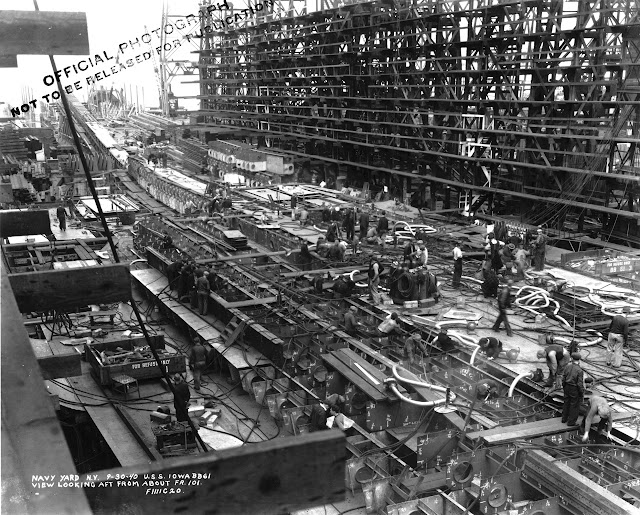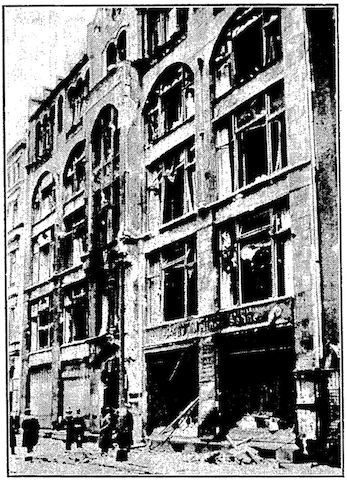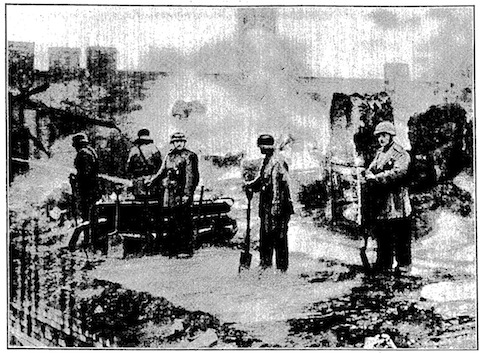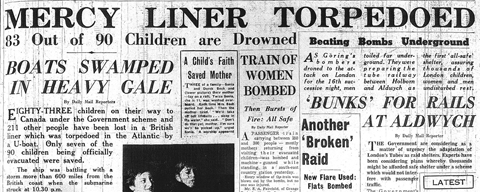Monday 30 September 1940
 |
| Vera von Schaburg. |
The first large attack is at 09:00 when about 60 aircraft (only twelve bombers) cross the coastline and attack RAF Biggin Hill and Kenley. It apparently is an attempt to bait Fighter Command into a pointless dogfight, but fails.
At 10:10, another, slightly larger formation of 75 planes follows the first. This time, Fighter Command intervenes and disperses the bombers, which cause little damage. However, it loses five Hurricanes to JG 26, the premiere Luftwaffe fighter squadron at the time.
Around 11:00, an even larger formation of 100 aircraft heads north from Cherbourg. RAF No. 10 Group intervenes, and fierce dogfights erupt. Once again, the bombers turn back before reaching any important targets.
The usual break for lunch hour takes place, and then another raid appears at 13:10 with 100 planes, followed closely by another 80 planes. Along with fighters making sweeps over the Channel, the total number of Luftwaffe planes in the air is well over 200. The raid aims for London, and many of the bombers make it there. RAF No. 12 Group sends up its Duxford "Big Wing," and they chase the bombers and the few escorting fighters back to France, getting several kills. Once again, the "Big Wing" is effective once in operation, but very slow off the mark, allowing many bombers to escape that might have been caught with a more timely interception.
At 16:00, another raid of 200 aircraft heads across at Dungeness. The target once again is Biggin Hill and other airfields in the general East Kent vicinity. Weymouth and Yeovil take the most damage. RAF No. 303 (Polish) Squadron, RAF No. 1 (Canadian) Squadron, and No. 229 Squadron attempt to form a "Big Wing" but get separated. However, they all stumble upon a huge formation of Bf 109s and Bf 110s and can only take some potshots before escaping into the clouds. Overall, the British fighters feast on this bomber attack, shooting down numerous planes. This is the most memorable action of the day, with bombers crashing to earth regularly, and the pilots of JG 2 also claiming several victories. Sgt. Franciszek, the Czech ace flying with the Poles, gets a Bf 109 before also escaping into the clouds for the final victory of his career.
As is usually the case when the Luftwaffe launches repeated attacks, it is a massively bad day for its planes and pilots. The figures are usually given as 47 Luftwaffe losses and 20 RAF losses. Such high losses are unsustainable, and it is becoming unclear why the Luftwaffe insists on these large daylight raids when night-time operations are productive and incur far fewer losses.
 |
| Daily Mail, 30 September 1940. |
- Luftwaffe plane losses: 433
- British fighter losses: 242
- Luftwaffe bombs on London: 6532 tons
- 6954 killed and 10,615 other casualties - not counting those made homeless.
Wing Commander Laurence Frank Sinclair drags an airman from a crashed, burning plane, and for this later is awarded the George Cross. British Air Raid Precaution Officer Thomas Adlerson is awarded the George Cross for actions in saving civilians in Bridlington in August 1940. It is worth pointing out that the George Cross, in theory, is supposed to be oriented toward civilian heroism, as it is the "equivalent" of the VC, but in practice, it usually goes to men acting in their official capacity on the home front (loosely defined).
F/O Urbanowicz of No. 303 Squadron claims two Bf109s and a Dornier Do 215 near the French coast. Dornier Do 215s are the German search and rescue planes, but the RAF considers them fair game despite that being of highly questionable legality. Pilot/Officer Radomski also shoots down a Do 215. Despite shooting down the German rescue planes, they remain effective at rescuing downed airmen from the Channel.
James Lacey downs a damaged Junkers Ju 88 bomber.
Oblt. Werner Machold of 9./JG 2 gets his 24th, 25th, and 26th victories. Hptm. Helmut Wick of Stab I./JG 2 claims a Hurricane and a Spitfire for his 33rd and 34th claims.
European Air Operations: RAF Bomber Command attacks Berlin, spending four hours over the city. Extensive damage is caused to industrial, rail and power targets. Other raids target the German coastal guns at Cap Gris Nez, the port of Cuxhaven, Amsterdam, and various airfields and railway targets in northwest Europe. Coastal Command and the Fleet Air Arm chip in with attacks on the port of Rotterdam and Ostend, along with other ports on the Channel. During a raid on Vlaardingen, the Fleet Air Arm loses an Albacore. Overall, the RAF loses five planes.
 |
| Damage caused by an RAF raid on Amsterdam (Rechtboomsloot) during the night of 29/30 September. |
On its eighth patrol and operating out of Lorient along the trade route 300 miles west of Ireland, U-37 (Kapitänleutnant Victor Oehrn) has a big day.
At 10:13, U-37 torpedoes and sinks banana boat 5390-ton British freighter Samala (the British love bananas, and 1500 tons go down with the Samala). All 68 onboard, including 2 passengers, perish.
At 21:56, U-37 strikes again. It torpedoes and sinks 2499 ton British collier Heminge, part of Convoy OA 222. There are 25 survivors, and one crewman perishes. The crew gets lucky by being picked up by British freighter Clan Cumming and landed at Liverpool.
U-32 (Kptl. Hans Jenisch) at 15:02 fires a torpedo at empty 3278-ton Dutch freighter Haulerwijk on the trade route west of Ireland. It is a straggler from Convoy OB 219. The torpedo runs under the empty freighter, and Jenisch has to spend hours chasing the now-alerted freighter as it zig-zags along in a panic. U-32 finally surfaces and uses its deck gun on the freighter. The ship stops and starts a couple of times, so U-32 keeps firing. Finally, the crew gives up and abandons ship, and after guiding the crew in its lifeboats toward land, U-32 sinks the ship by gunfire at 20:35. There are 27 survivors, while four crew perish.
The minefield audaciously laid recently by a Kriegsmarine destroyer flotilla at the southern end of the English Channel off Falmouth continues to pay dividends. It racks up a score with smaller ships that explode spectacularly. Due to the size of the mines, the crews of smaller victims tend to have little chance of survival.
Royal Navy minesweeping trawler HMT Comet hits one of the Falmouth mines There are 2 survivors, while 15 crew perish.
Some sources claim that Royal Navy armed yacht HMY Sappho hits a mine and sinks today in the same area as the Comet. Other sources say it occurs on the 29th. In any event, 29 are killed and nobody survives.
In Operation MW, the British bring monitor HMS Erebus and its two 15-inch guns to Hellfire Corner between Dover and Calais. It fires 17 rounds at the German coastal guns at Cap Gris Nez and nearby, joined by destroyers HMS Garth and Vesper, with little effect.
U-31 (Kptl. Wilfried Prellberg) narrowly escapes two torpedoes fired at it at 03:16. This is a mystery, as there is no record of any submarine by either side firing the torpedoes.
Royal Navy destroyer HMS Kipling collides with British freighter Queen Maud while escorting Convoy FN 295. It returns to the Humber for minor repairs.
Patrol Sloop Mallard is damaged by a mine off Harwich and is taken by tug Kenia back to port for extensive repairs.
British freighter Sussex, sailing with Convoy SL 47 off Kinnaird Head, is damaged in a Luftwaffe attack at around 20:00.
A British minelaying flotilla departs from Loch Aish to lay Field NS 42 north of Scotland.
The Kriegsmarine sends torpedo boats to lay minefield Werner off Dover.
British freighter Automedon, a spy ship, departs from London for Singapore with highly classified information, codes and other materials on board regarding British Far East dispositions and plans.
Convoy OA 222 departs from Methil, Convoy FN 295 departs from Southend, Convoy HX 77 departs from Halifax, Convoy BHX 77 departs from Bermuda.
Kriegsmarine cruiser Admiral Hipper makes port in Kiel after experiencing engine trouble.
Allied Shipping Losses for the month of September 1940 total approximately 403,504 tons sunk in the Atlantic and about 450,000 tons overall.
Overall, 92 Allied ships sunk in the Atlantic:
- 295,335 tons sunk by U-boat;
- 56,328 tons sunk by aircraft
- 96,288 tons sunk by raiders
- 8,269 tons sunk by mines.
U-73 (Kapitänleutnant Helmut Rosenbaum) is commissioned.
Light cruisers HMS Dido (37), Nigeria (60), Phoebe (43) and corvette HMS Cyclamen (K 83) are commissioned.
 |
| HMS Gloucester enters Grand Harbour, Malta. Naval-history.net. |
Some sources place the sinking of Italian submarine Gondar by HMS Stuart and Short Sunderland flying boats today, others on the 29th. In any event, all 47 onboard survive.
At Malta, cruisers HMS Gloucester and Liverpool make port at Grand Harbour at 22:00. They carry 1000+ troops, primarily anti-aircraft gunners and infantry, and general cargo, including anti-aircraft guns and munitions. Furious unloading begins immediately so that the ships can clear out on the 1st. The troops have been at sea for weeks on the long way around the Cape of Good Hope. This completes Operation MB 5 (once they unload and sail).
The Italian fleet has been at sea due to reports about Convoy MB 5, but, having not spotted the enemy, returns to port.
Spy Stuff: During the night of September 29th/30th, the Germans implement a key part of Operation Lobster (Unternehmen Hummer), which encompasses the collection of military data about Great Britain. This particular part of Operation Lobster has been planned in early September 1940 to coincide with Operation Sealion and proceeds despite the latter operation's suspension. This particular sub-operation is part of Operation Lena, the infiltration of spies ("HUMINT") into England and Scotland. Major Klug in the Abwehr Office WN 2 (Section 2), under the general direction of Admiral Canaris, gives the final go-ahead.
At 02:30, three Abwehr agents board a Heinkel He 115 seaplane in Stavanger, Norway. They fly across the Channel to the west of Scotland and land just off the Banff coast, paddling ashore. The agents are (they all have multiple names and variations of those names, which, if any, are real is a little unclear):
- Vera de Witte (alias for Vera Schaburg aka Vera Erikson aka Vera de Cottany-Chalbur),
- Theodore Drueke (aka Karl Druecke aka Karl Drucke, his name is spelled differently in every source) and
- Werner Waelt (aka Robert Petter).
The three agents are to observe military bases and airfields and report back to Germany using wireless in order to facilitate Operation Sealion. They carry in their luggage bundles of cash, lists of RAF airfields to observe, and 19 magazines of ammunition. It is widely believed by historians that Vera Schaburg is a double agent, but this has never been proved conclusively. This incident was made into a German television movie, "The Beautiful Spy" (2013), directed by Miguel Alexandre.
The agents attempt to act like normal train travelers. However, they are spotted at Port Gordon and two, Schaburg and Drucke, are arrested at Buckle on the Moray Firth. The third agent, named Petter, is arrested around the same time in Edinburgh after he deposits a disguised wireless set at the train baggage claim area. The two men are executed as spies at Wandsworth Prison on 6 August 1941, while Vera Schaburg disappears from history. She is presumed by many to be a double-agent whisked away to parts unknown by MI5/MI6 - or perhaps they found another use for her.
Many rumors float around about this woman, a notorious spy both in Russia/Soviet Union and Germany on a par with Mata Hari, but very few facts. Let's just say that you could trust her about as far as you could throw her. The last hint of her fate is that she returned to Germany after the war. Born in 1912 in Russia, it is highly unlikely but not impossible that Schaburg still survives.
German Military: Georg von Bismarck, the commander of the 7th Schützen-Regiment (motorized infantry regiment) of Erwin Rommel's 7th Panzer Division during the famous Channel Dash, receives the Knight's Cross of the Iron Cross.
British Military: Already a Knight Grand Cross of the Royal Victorian Order since 23 January 1937, Air Marshal Hugh Dowding becomes a Knight Grand Cross of the Order of the Bath (investiture 8 October 1940).
US Military: Battleship USS Arizona makes port at Long Beach, California.
 |
| A Bantam Blitz Buggy, currently undergoing tests at Camp Holabird, Maryland on 30 September 1940. |
China: The Communist Chinese New 4th Army leaves Jiangyan for Huangqiao to form a defensive position against an expected Nationalist Chinese attack. Much effort is wasted by the Chinese in these fraternal battles. The Japanese send an air attack against Kunming.
Free France: General Charles de Gaulle, in Freetown following the failed Operation Menace, departs by air for Lagos.
British Homefront: The government announces that 50 London firemen have perished during the month of September 1940.
German Homefront: Berlin Children are encouraged to visit rural relatives by being given extra vacation time if they do.
Future History: Dewey Martin is born in Chesterville, Ontario. He becomes famous in the 1960s as the drummer with Buffalo Springfield, and also for session work with The Monkees. He passes away in 2009.
 |
| Battleship USS Iowa (CV 16) under construction at New York Navy Yard, Brooklyn, New York, 30 September 1940. |
September 1, 1940: RAF's Horrible Weekend
September 2, 1940: German Troopship Sunk
September 3, 1940: Destroyers for Bases
September 4, 1940: Enter Antonescu
September 5, 1940: Stukas Over Malta
September 6, 1940: The Luftwaffe Peaks
September 7, 1940: The Blitz Begins
September 8, 1940: Codeword Cromwell
September 9, 1940: Italians Attack Egypt
September 10, 1940: Hitler Postpones Sealion
September 11, 1940: British Confusion at Gibraltar
September 12, 1940: Warsaw Ghetto Approved
September 13, 1940: Zeros Attack!
September 14, 1940: The Draft Is Back
September 15, 1940: Battle of Britain Day
September 16, 1940: Italians Take Sidi Barrani
September 17, 1940: Sealion Kaputt
September 18, 1940: City of Benares Incident
September 19, 1940: Disperse the Barges
September 20, 1940: A Wolfpack Gathers
September 21, 1940: Wolfpack Strikes Convoy HX-72
September 22, 1940: Vietnam War Begins
September 23, 1940: Operation Menace Begins
September 24, 1940: Dakar Fights Back
September 25, 1940: Filton Raid
September 26, 1940: Axis Time
September 27, 1940: Graveney Marsh Battle
September 28, 1940: Radio Belgique Begins
September 29, 1940: Brocklesby Collision
September 30, 1940: Operation Lena
October 1940
October 1, 1940: Wait Daddy October 2, 1940: Hitler's Polish Plans
October 3, 1940: British Cabinet Shakeup
October 4, 1940: Brenner Pass Meeting
October 5, 1940: Mussolini Alters Strategy
October 6, 1940: Iron Guard Marches
October 7, 1940: McCollum Memo
October 8, 1940: Germans in Romania
October 9, 1940: John Lennon Arrives
October 10, 1940: Führer-Sofortprogramm
October 11, 1940: E-Boats Attack!
October 12, 1940: Sealion Cancelled
October 13, 1940: New World Order
October 14, 1940: Balham Tragedy
October 15, 1940: Mussolini Targets Greece
October 16, 1940: Japanese Seek Oil
October 17, 1940: RAF Shakeup
October 18, 1940: Convoy SC-7 Catastrophe
October 19, 1940: Convoy HX-79 Catastrophe
October 20, 1940: Convoy OB-229 Disaster
October 21, 1940: This Evil Man Hitler
October 22, 1940: Aktion Wagner-Burckel
October 23, 1940: Hitler at Hendaye
October 24, 1940: Hitler and Petain
October 25, 1940: Petain Woos Churchill
October 26, 1940: Empress of Britain Attack
October 27, 1940: Greece Rejects Italian Demands
October 28, 1940: Oxi Day
October 29, 1940: US Draft Begins
October 30, 1940: RAF Area Bombing Authorized
October 31, 1940: End of Battle of Britain
2020






